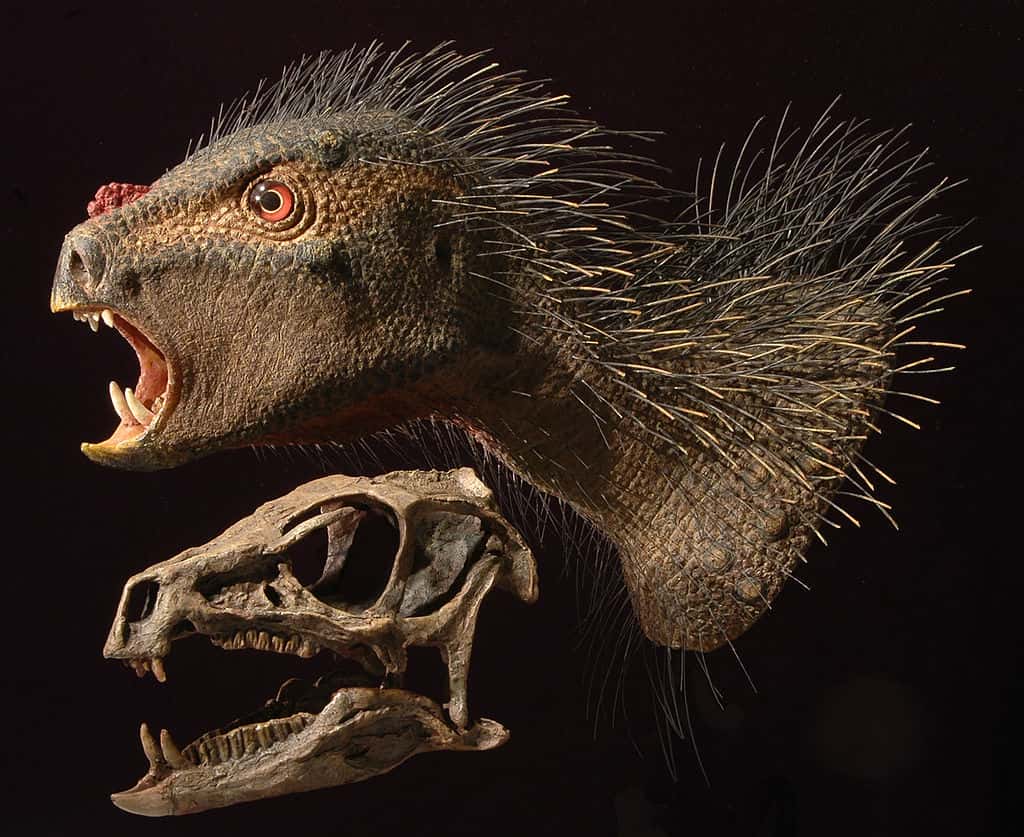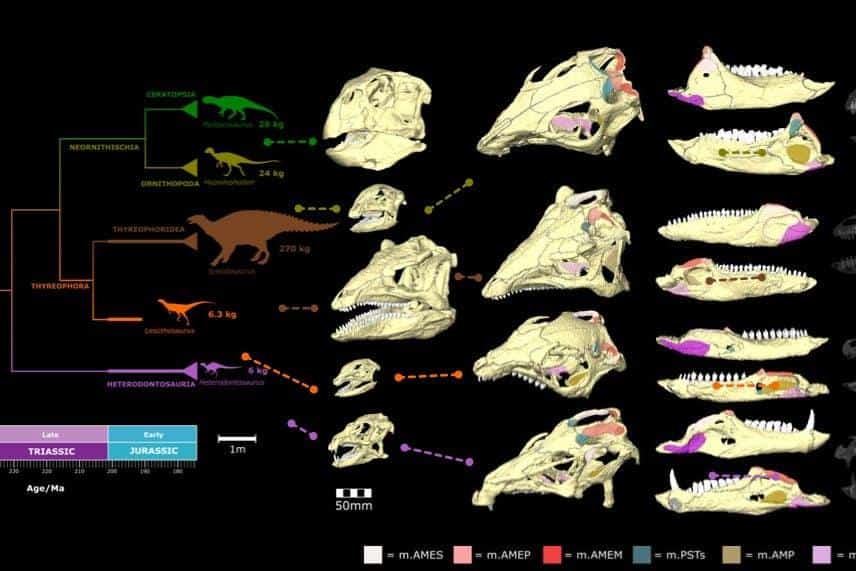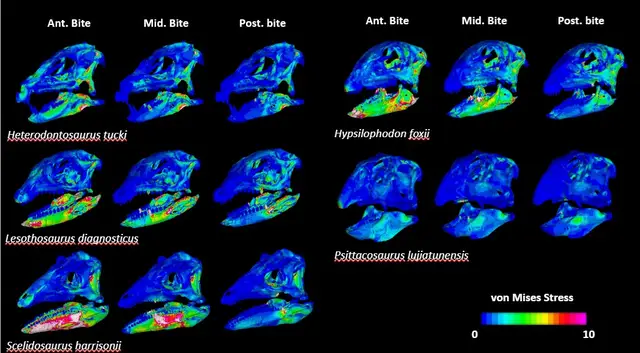While studies have shown how different dinosaurs ate their food, very little is known about how they evolved their preferred eating styles. In a new study, researchers found a surprising number of differences in the way these extinct animals that used to dominate the planet tackled a plant-based diet, reconstructing jaw muscles and measuring the dinosaurs’ bite force.

A group of researchers from the University of Bristol in the United Kingdom used CT scans of dinosaur skulls to track the evolution of early herbivores. They analyzed five skulls of dinosaurs from the plant-eating group Ornithischia, including Heterodontosaurus, Lesothosaurus, Scelidosaurus, Hypsilophodon, and Psittacosaurus.
These are the earliest representatives of what would later become the largest herbivore dinosaur group. While they were all vegetarian, the five animals evolved in different ways and had a range of adaptations to eating plants. The finding could bring further light into how dinosaurs evolved to take certain ecological niches, the researchers said.
“When we compared the functional performance of the skull and teeth of these plant-eating dinosaurs, we found significant differences in the relative sizes of the jaw muscles, bite forces and jaw strength between them,” study lead author David Button said in a statement, which shows they had evolved different ways of tackling their diet.
Herbivores and their feeding habits
After performing CT scans on the fossils, the researchers reconstructed jaw muscles using data from living species, such as birds and crocodiles, to identify where the muscles would have been. Then they did a “finite element analysis,” a numerical method that divides a surface area into many smaller parts to predict how a model will react to forces in the real world, and calculated the bite force of the muscles based on their size and arrangement.

During simulations, the skulls bit an imaginary object so researchers could see how different elements respond to the applied force. Heat maps showed the areas of the skull that are strongly stressed and the ones that aren’t. The results showed that all dinosaurs involved in the study ate plants but that each had their own different way of going about it.

Heterodontosaurus, for example, seems to have big jaw muscles relative to its skull size, producing a high bite force that’s ideal to eat tough vegetation. Scelidosaurus had a similar bite force but smaller jaw muscles. Meanwhile, Hypsilophodon‘s skull didn’t have big muscles so it reoriented them to bite more efficiently with less muscle force.
“Some compensated for low eating performance through their sheer size, whilst others developed bigger jaw muscles, increased jaw system efficiency, or combined these approaches. Although these animals looked very similar, their individual solutions to the same problems illustrates the unpredictable nature of evolution,” study author Stephan Lautenschlager said in a statement.
The study was published in the journal Current Biology.



